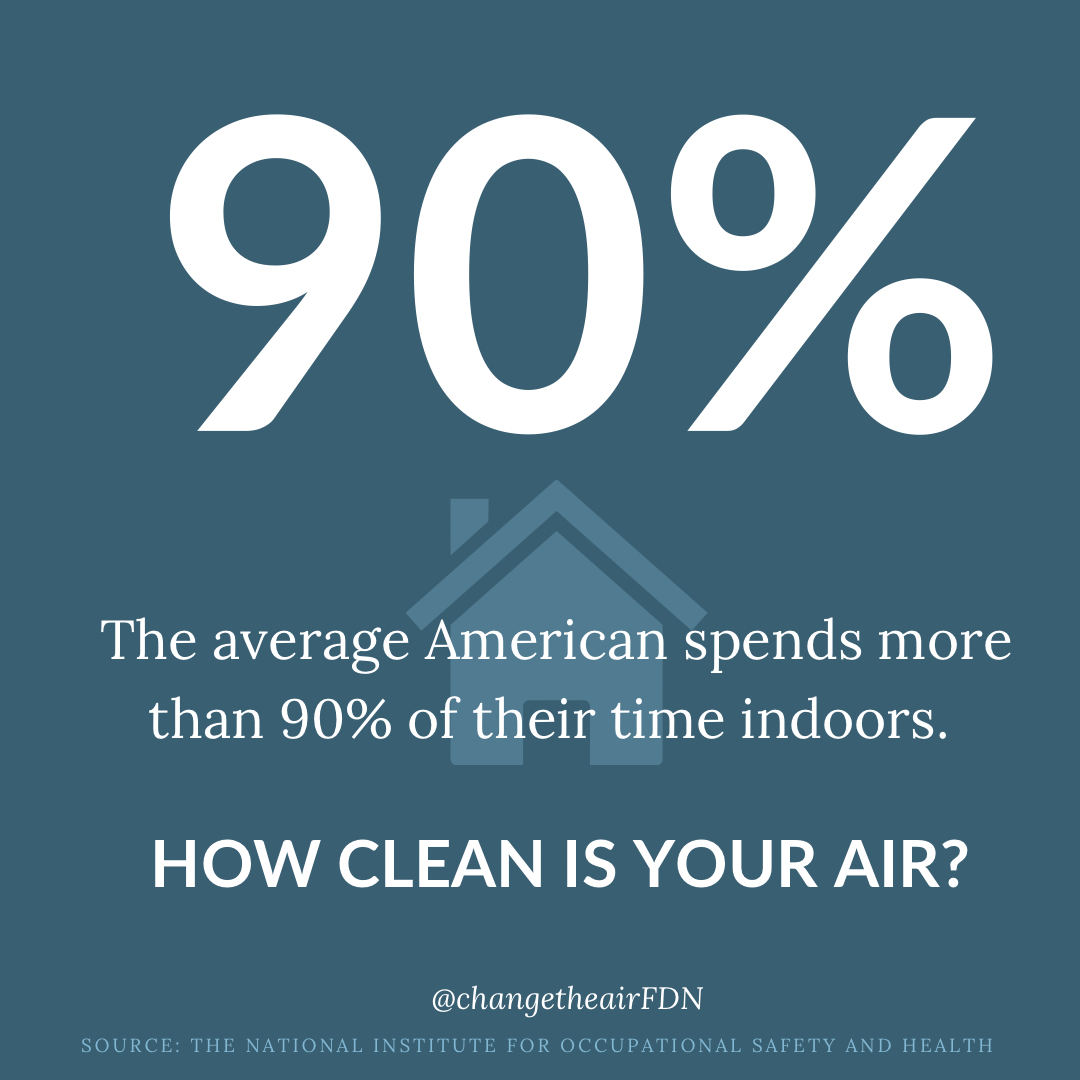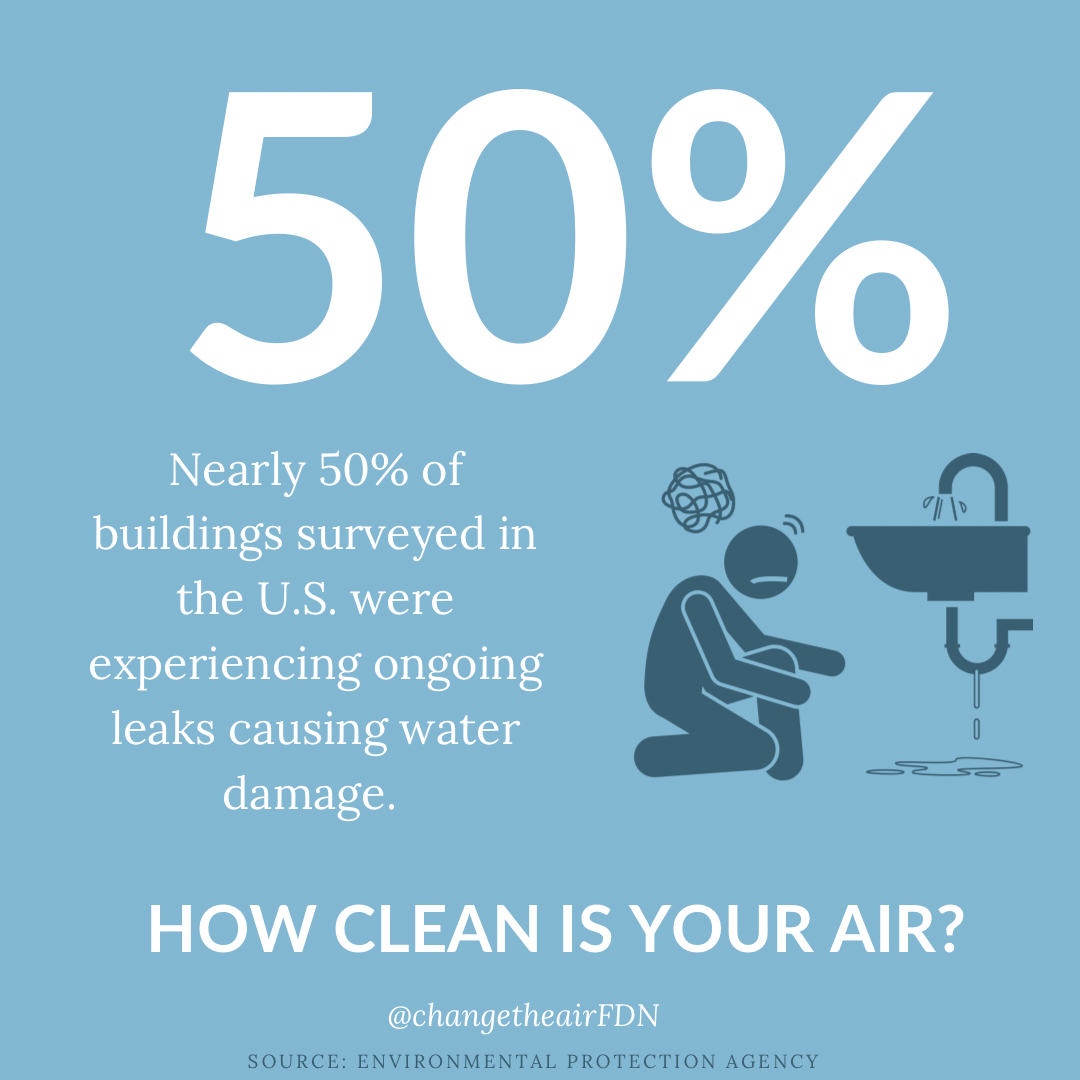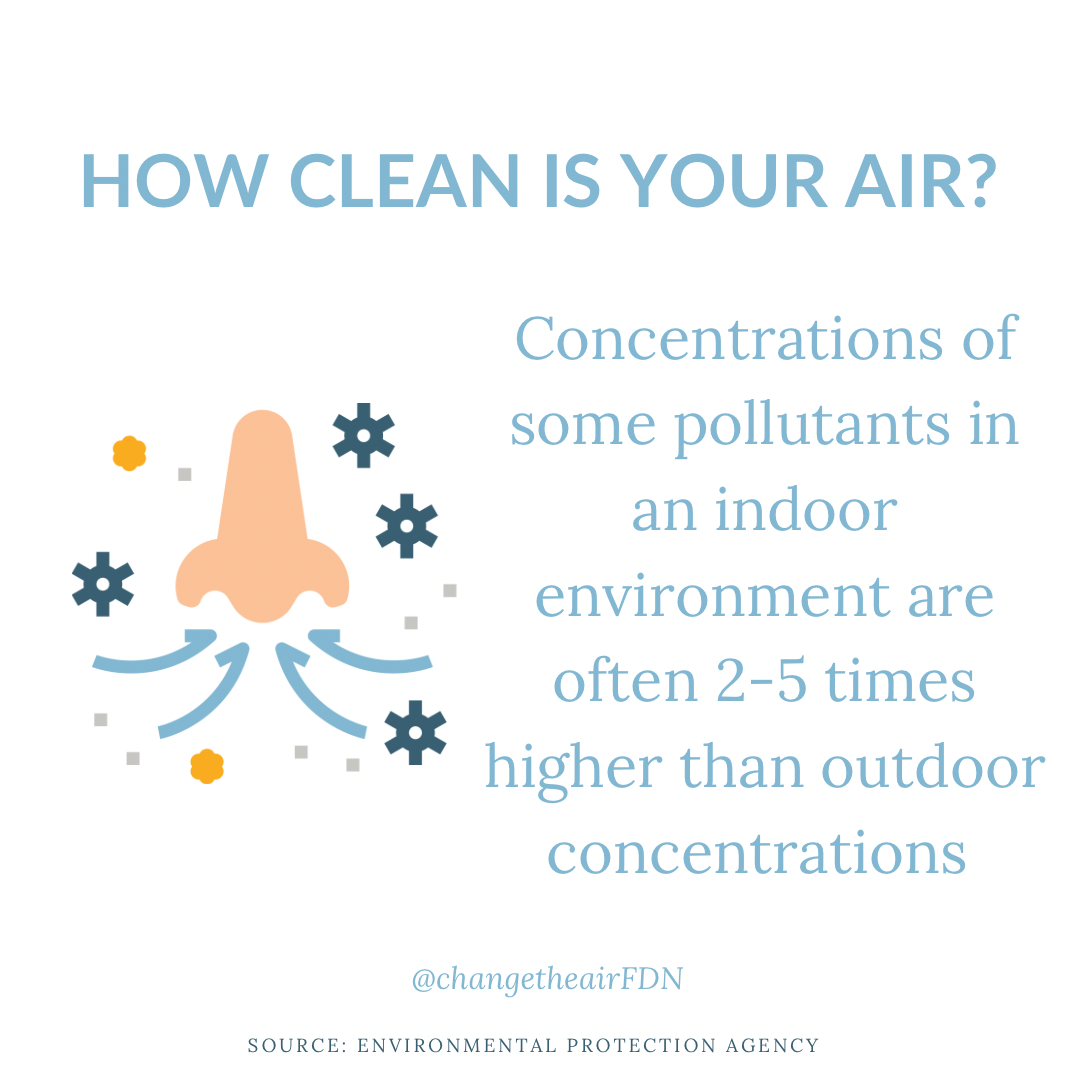Until recently, you may not have thought much about what was in the air you were breathing or how it could affect your health.
But the last few years have brought indoor air quality to the forefront of many people’s minds – and rightly so!
The fact is we spend more time indoors than ever breathing in air that is potentially bad for our health.Consider the following:
Now let’s look at each of these in a bit more detail.
The National Institute for Occupational Safety and Health estimates the average American spends more than 90% of their time indoors.

Think of all the places you’ve been indoors this week. These might include:
- your home
- your child’s school
- the office
- the grocery store
- the doctor’s office
- the gym
- a restaurant
"By the time we hit 40, most of us have spent 36 years indoors," wrote Joseph G. Allen and John D. Macomber, whose collaboration at Harvard University resulted in the book, 'Healthy Buildings: How Indoor Spaces Drive Performance and Productivity.'
And for our children, spending 90% of their time indoors can mean, "By the time they graduate from high school, they will have spent 15,600 hours inside a school."
So if we are spending more time than ever indoors, it begs the question, "How clean is our air?"
The answer may surprise you.
The truth is many of our schools, homes, and buildings, suffer from water damage and other indoor air pollutants.
A US Environmental Protection Agency (EPA) survey found nearly 50% of buildings were experiencing ongoing problems with leaks causing water damage.
When we think of water damage, we often think of major events like a burst pipe or a flood. We picture gushing pools of water. But water damage doesn’t always make such a splashy entrance!
It can occur slowly over time…
Imagine a pin hole leak or an improperly installed window.
It can also occur in places not often seen…
Like in your attic, crawlspace, behind walls, or under floors.

What’s worse, a water intrusion situation can quickly turn into a mold situation. Water-damaged buildings often harbor mold, bacteria, mVOCs, and various indoor air pollutants that are hazardous to our health.
A 2018 Tufts University study concluded that exposure to mold and mycotoxins was associated with asthma, wheezing, bronchitis, fatigue, musculoskeletal pain, headaches, anxiety, mood, cognitive issues, and depression.
A study from Brown University in 2007 showed that residents living in visibly damp and moldy households had a 44% higher risk of depression than those in mold-free dwellings. (To learn more about some of the symptoms associated with mold exposure, click here.)
But here’s the good news: you can do something about it!
Start by learning to identify the signs of water damage so you can take appropriate steps to stop and address it safely.
Common signs of water damage include:
- Bubbling
- Buckling & Separating
- Cracking & Peeling
- Rust & Efflorescence
- Staining
Does water damage always result in mold growth? No, not always. But under the right circumstances, mold can grow in as little as 24-48 hours so it’s important to act quickly and proceed with caution. You don’t want to be breathing in mold or other byproducts from water-damaged buildings. This brings us to our next statistic.

According to the American Lung Association, the average adult takes 20,000 breaths a day.
That translates to breathing in a lot of air inside buildings that have a decent chance of having an ongoing water leak and consequently mold. But there’s more. It’s not just mold and water damage that pose a problem to our indoor spaces – it’s a number of other pollutants.According to the EPA, concentrations of some pollutants in an indoor environment are often 2-5 times higher – even up to 100 times higher - than outdoor concentrations.
Some of these indoor pollutants may include:
- Mold
- Dust mites
- Dander
- Pests
- Carbon monoxide
- Carbon dioxide
- Radon
- Formaldehyde
- Volatile Organic Compounds (VOCs)
- Bacteria
- Viruses
- Lead
- Asbestos
- Pollen

This means what’s floating in the air in our homes, schools, and places of work matters! These pollutants are often scentless, invisible to the naked eye, and can be difficult to detect without special equipment.
So, what can we do about it?
To address these, the EPA identifies three options for improving the quality of your indoor air:
- Source control or removal
- Increased ventilation
- Air cleaners/purifiers
We’ll go into more detail about these in future posts, but here’s a brief outline of each:
Source Control and Removal: This is often the best way to limit exposure. Address mold and water-damaged areas quickly and safely. Be intentional and mindful when selecting and using building materials, furniture, cleaning and personal care products. Maintain appliances to decrease any accidental emissions.
Increased Ventilation: This involves increasing the amount of outdoor air that is brought into the home or building. At its simplest, opening doors and windows (as climate and weather allow). Using kitchen and bathroom fans during cooking and bathing will exhaust moisture and pollutants outdoors. Newer and more energy efficient homes may require mechanical assistance from energy recovery ventilators (ERVs) which are designed to bring fresh air from outside into your home or building.
Air cleaners/purifiers: This involves using filtration to remove certain pollutants from the air. There are a variety of machines available today – some portable and some that attach to your HVAC unit. The effectiveness and cost of these types of machines vary greatly.
Again, we promise to come back and discuss all of this in more detail in the future!
But in the meantime, ask yourself, “How clean is your air?”
Sources:
Allen, Joseph G., and John Macomber. Healthy Buildings How Indoor Spaces Can Make You Sick or - Keep You Well. Harvard University Press, 2022.
“Building Air Quality (98-123).” Centers for Disease Control and Prevention, Centers for Disease Control and Prevention, 6 June 2014, www.cdc.gov/niosh/docs/98-123/default.html.
“Building Assessment Survey and Evaluation Study | US EPA.” United States Environmental Protection Agency , www.epa.gov/indoor-air-quality-iaq/building-assessment-survey-and-evaluation-study. Accessed 12 June 2022.
“Improving Indoor Air Quality | US EPA.” United States Environmental Protection Agency , www.epa.gov/indoor-air-quality-iaq/improving-indoor-air-quality. Accessed 12 June 2022.
Pinto, Michael A. Fungal Contamination: A Comprehensive Guide for Remediation. Wonder Makers Environmental, 2008.
Potera C. Molding a link to depression. Environ Health Perspect. 2007 Nov;115(11):A536. doi: 10.1289/ehp.115-a536a. PMID: 18007972; PMCID: PMC2072855.
Ratnaseelan, Aarane & Tsilioni, Eirini & Theoharides, Theoharis. (2018). Effects of Mycotoxins on Neuropsychiatric Symptoms and Immune Processes. Clinical Therapeutics. 40. 10.1016/j.clinthera.2018.05.004.
Stephen , Michael J. “2020: The Year We Lost Our Breath.” American Lung Association, 29 Mar. 2021, www.lung.org/blog/2020-breath.
Why Indoor Air Quality Is Important To Schools | US EPA, www.epa.gov/iaq-schools/why-indoor-air-quality-important-schools. Accessed 12 June 2022.
